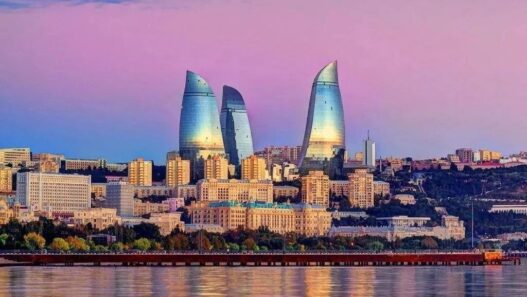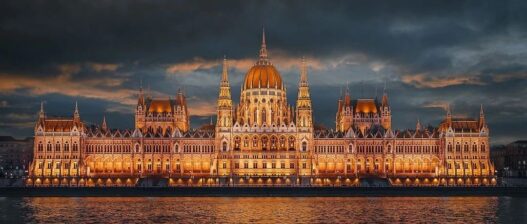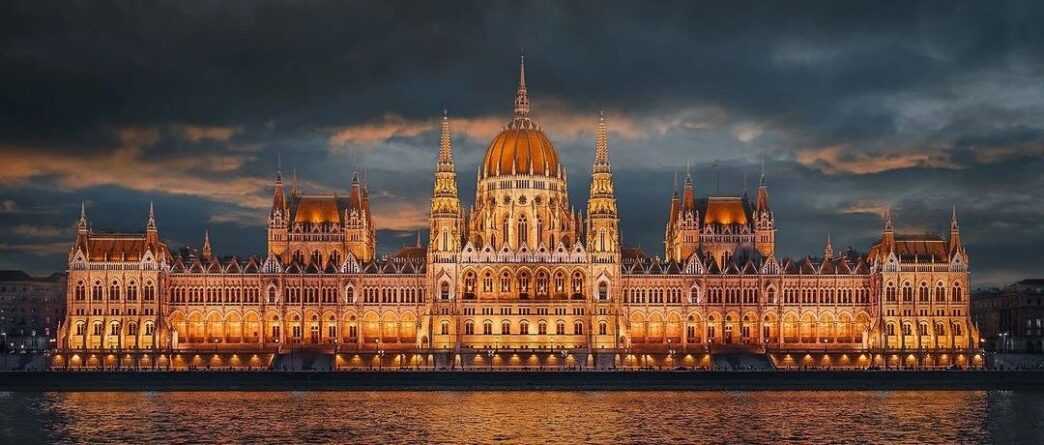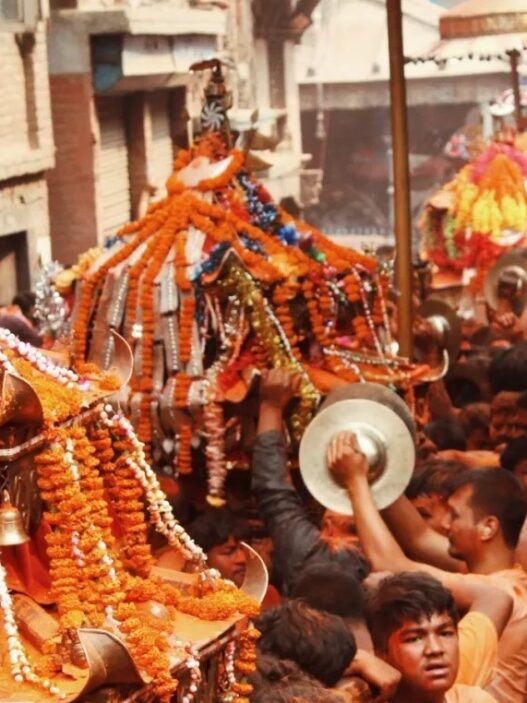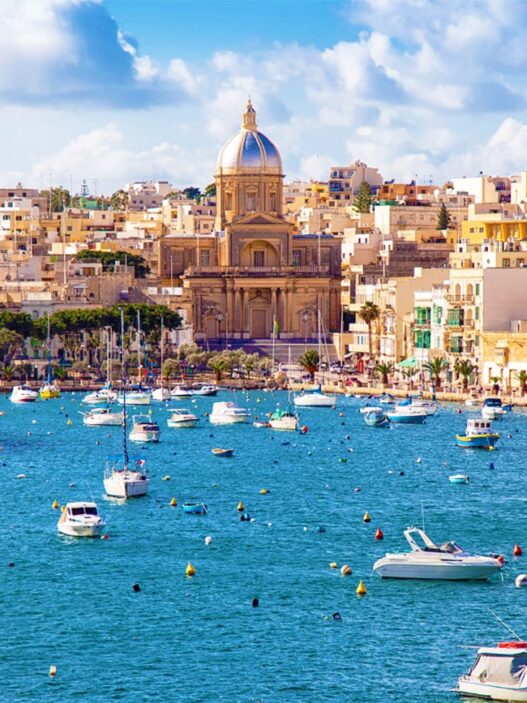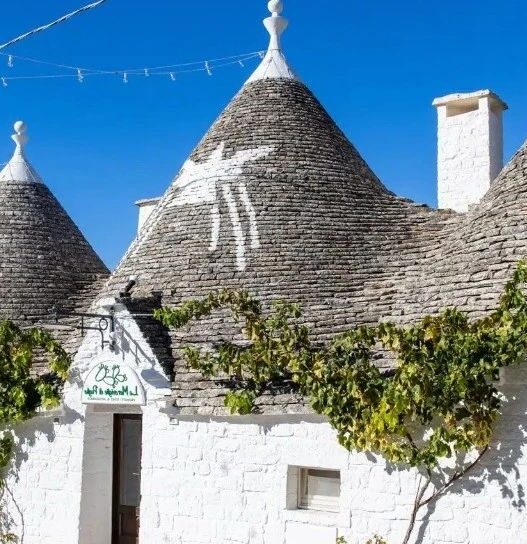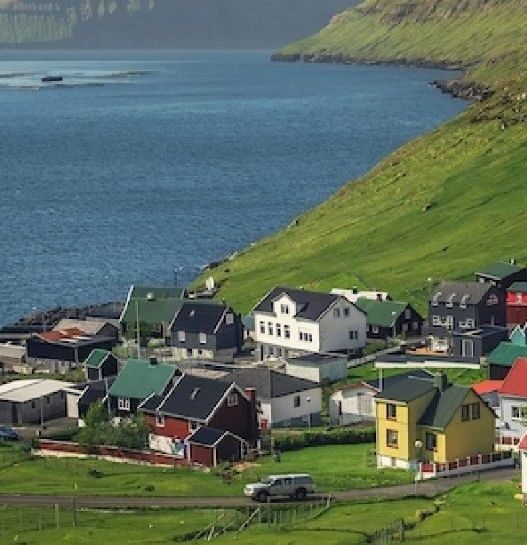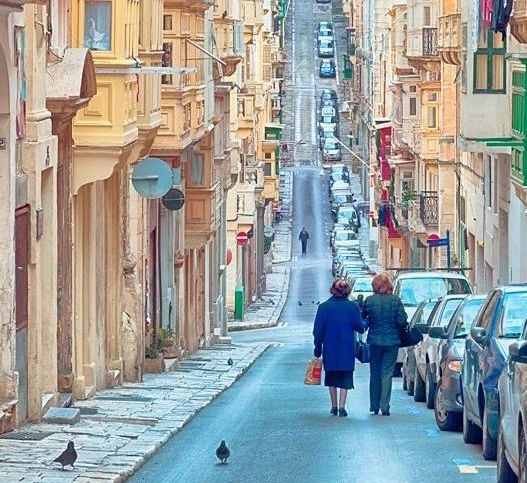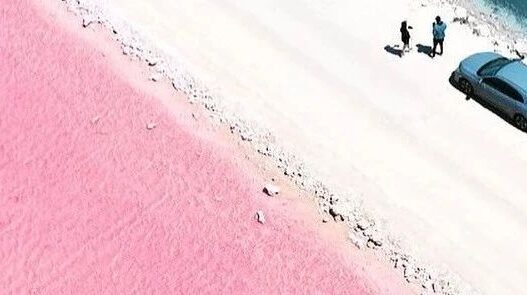Budapest, situated on both banks of the Danube River, seems like a flowing medieval European canvas. When you first lay your eyes upon it, its ancient and elegant atmosphere envelops you, drawing you in deeply.
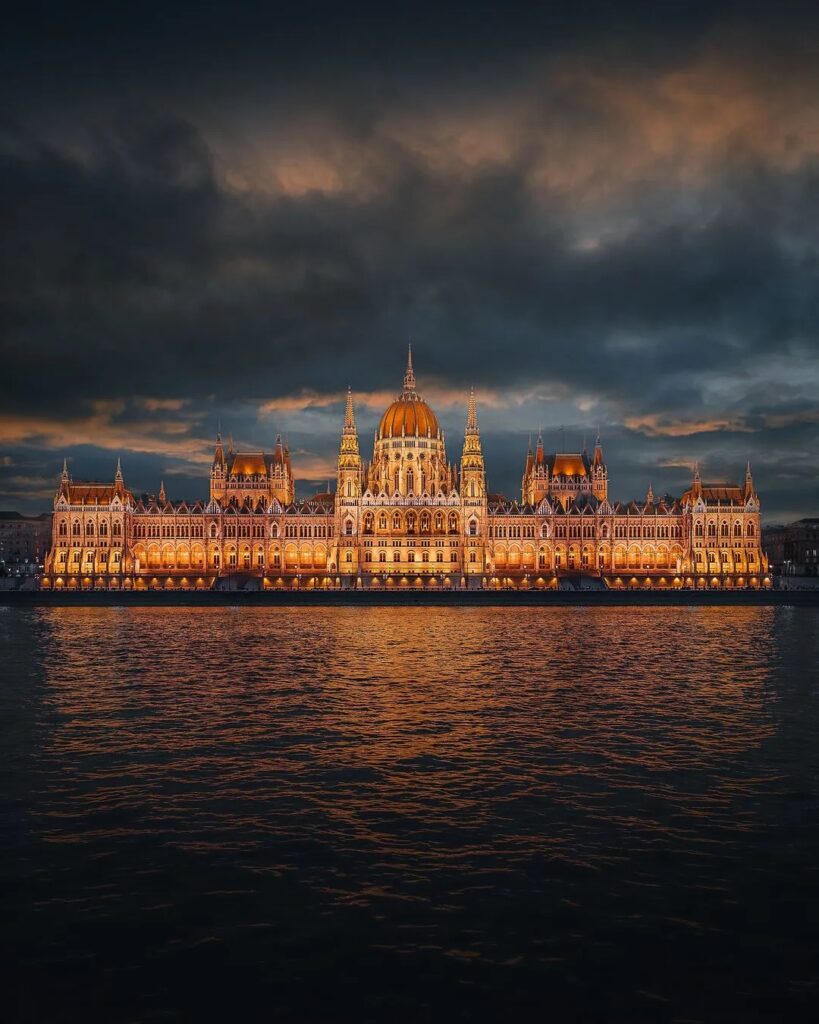
Budapest, the capital of Hungary, has its origins traced back to two cities that once faced each other across the Danube River—the western Buda and Óbuda, and the eastern Pest.
After centuries of expansion and merging, they formed what is now Budapest. Not only is Budapest the political, commercial, and transportation center of Hungary, but it’s also its largest city.
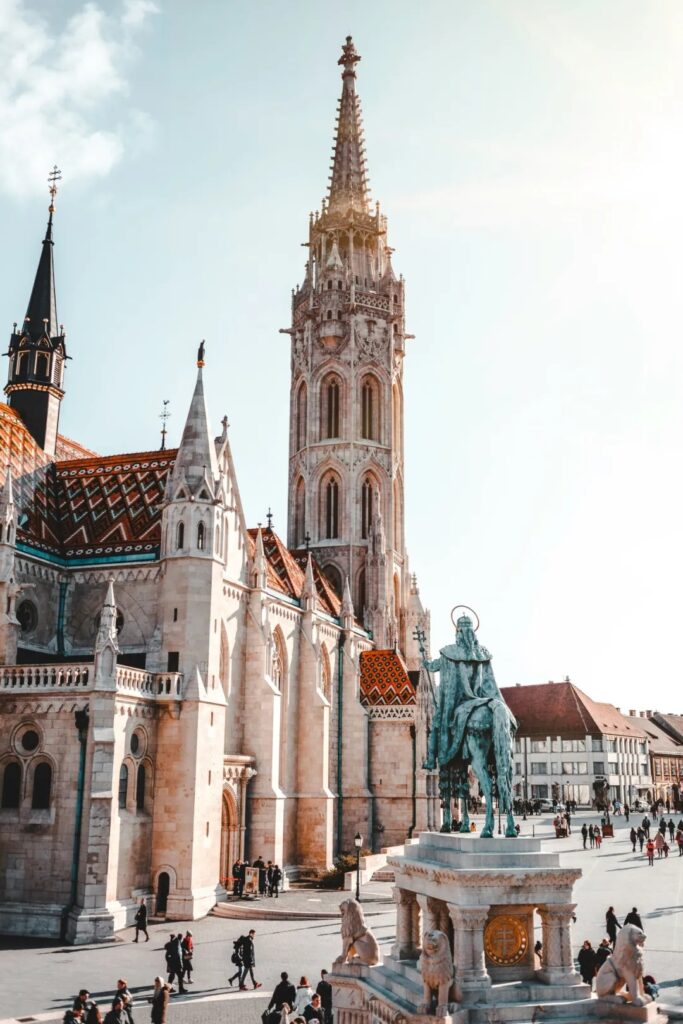
Budapest is known as the “Paris of the East” and the “Pearl of the Danube.” It boasts numerous landmarks, with the Danube Embankment, Buda Castle District, and Andrássy Avenue all listed as UNESCO World Heritage Sites.
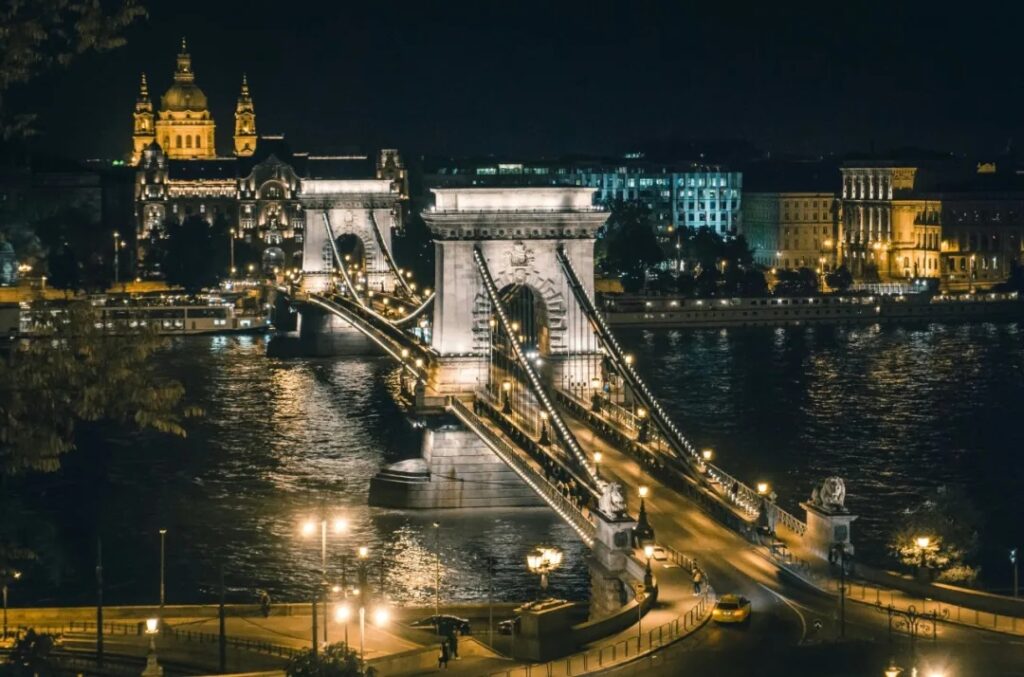
Daytime Budapest is tranquil, with sunlight casting a golden glow on the ancient buildings. The Danube River flows quietly, pedestrians stroll leisurely on the bridges, and the whole city is bathed in a serene and harmonious atmosphere.
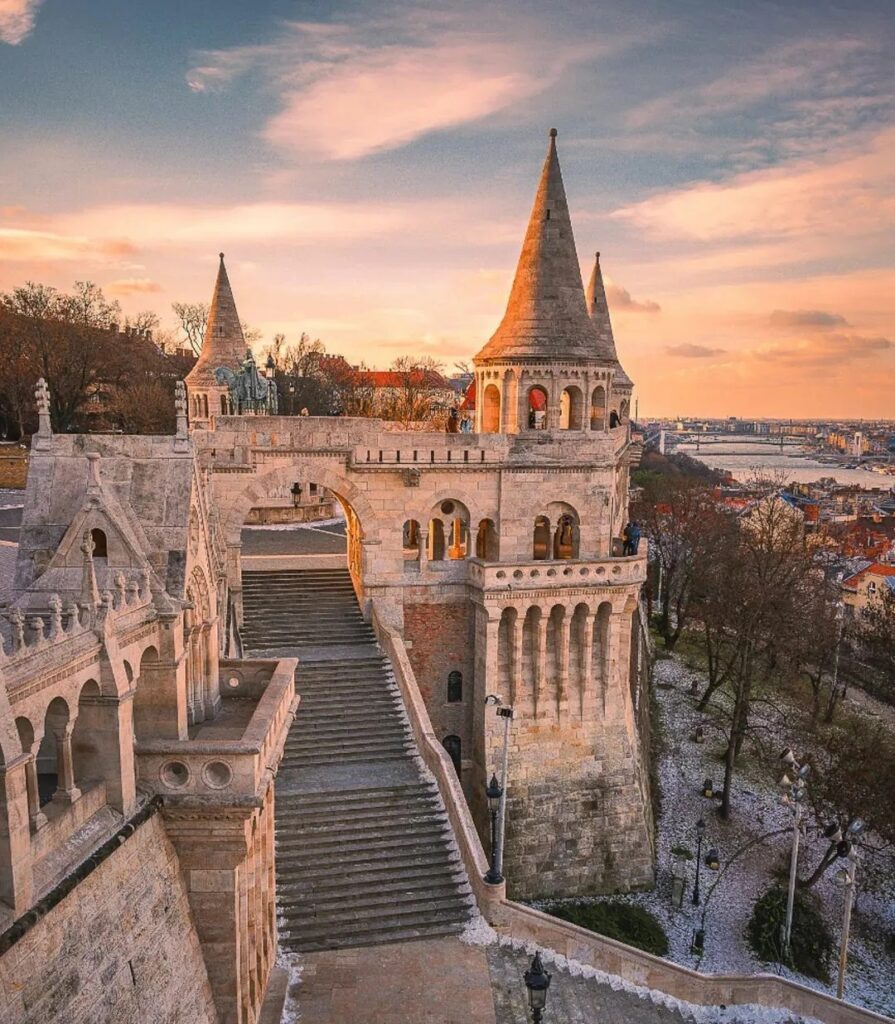
Nighttime Budapest is romantic. As dusk falls, the city lights begin to twinkle, adorning both banks of the Danube with a poetic touch. The lights on the bridges reflect on the water, creating beautiful patterns of light and shadow. The entire city is enveloped in a romantic and enchanting ambiance.
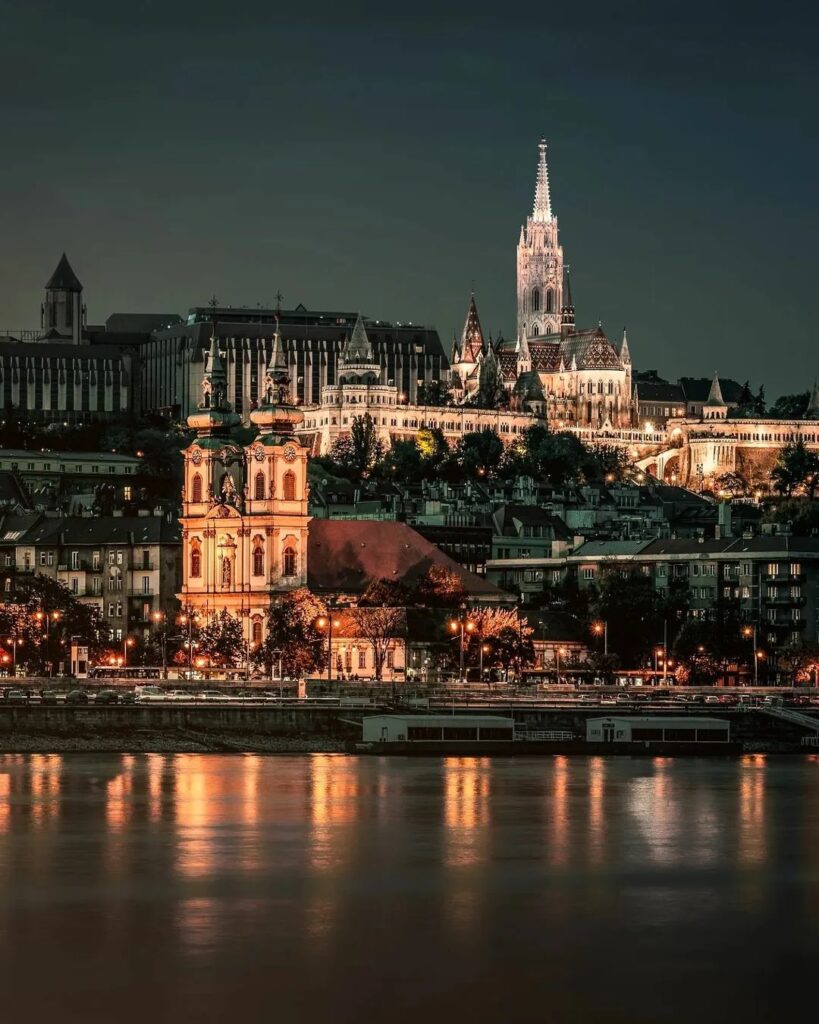
Budapest, with its charm, is a place people will fall in love with again and again at different stages of their lives.
Buda Castle
Buda Castle, perched atop Castle Hill in the heart of Budapest, is a historic fortress that attracts visitors from around the world with its unique scenery and rich historical background.
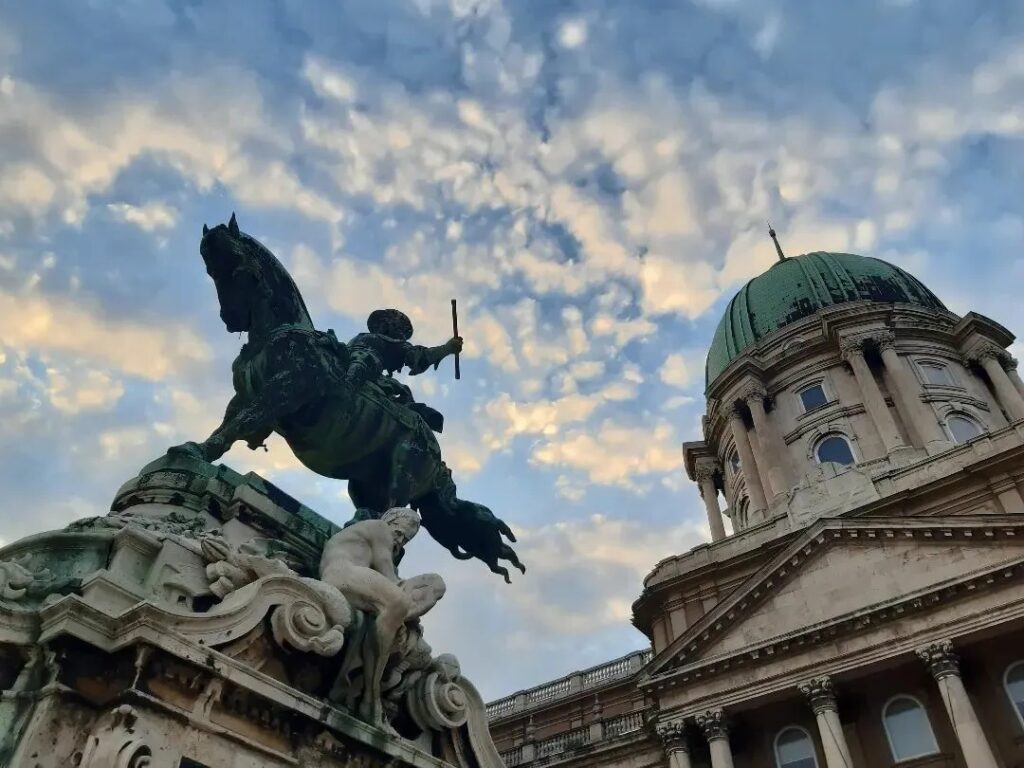
The castle was first built in 1247 and has witnessed the glory and changes of Hungary through the ages. Today, Buda Castle has become Hungary’s National Gallery and Museum, showcasing countless precious artworks and artifacts, earning praise from visitors worldwide for its exquisite architecture and rich collections.
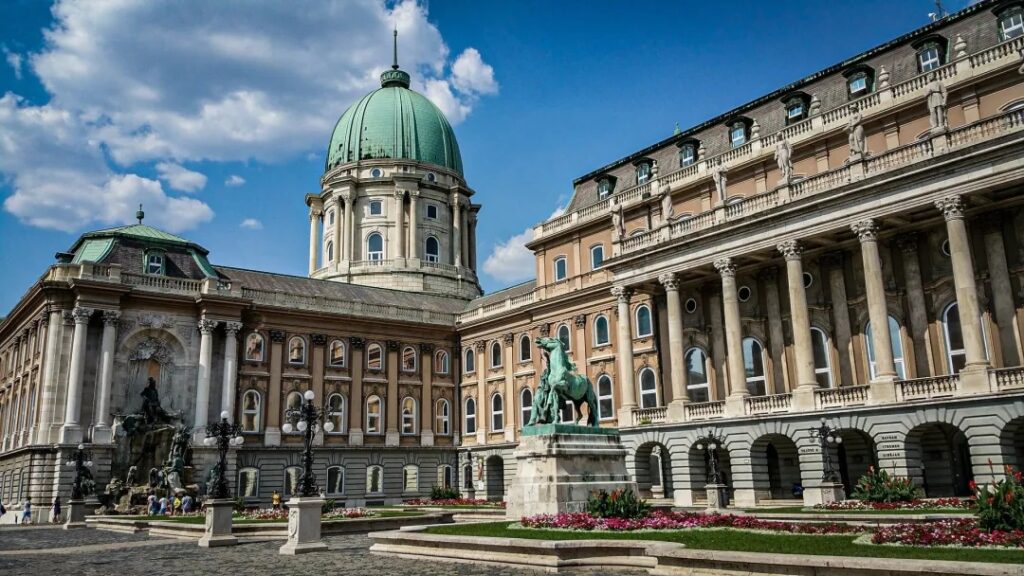
Ascending Castle Hill, the grandeur of Buda Castle is laid bare before you. Here, one can gaze at the winding Danube River or overlook the entire panorama of Budapest.
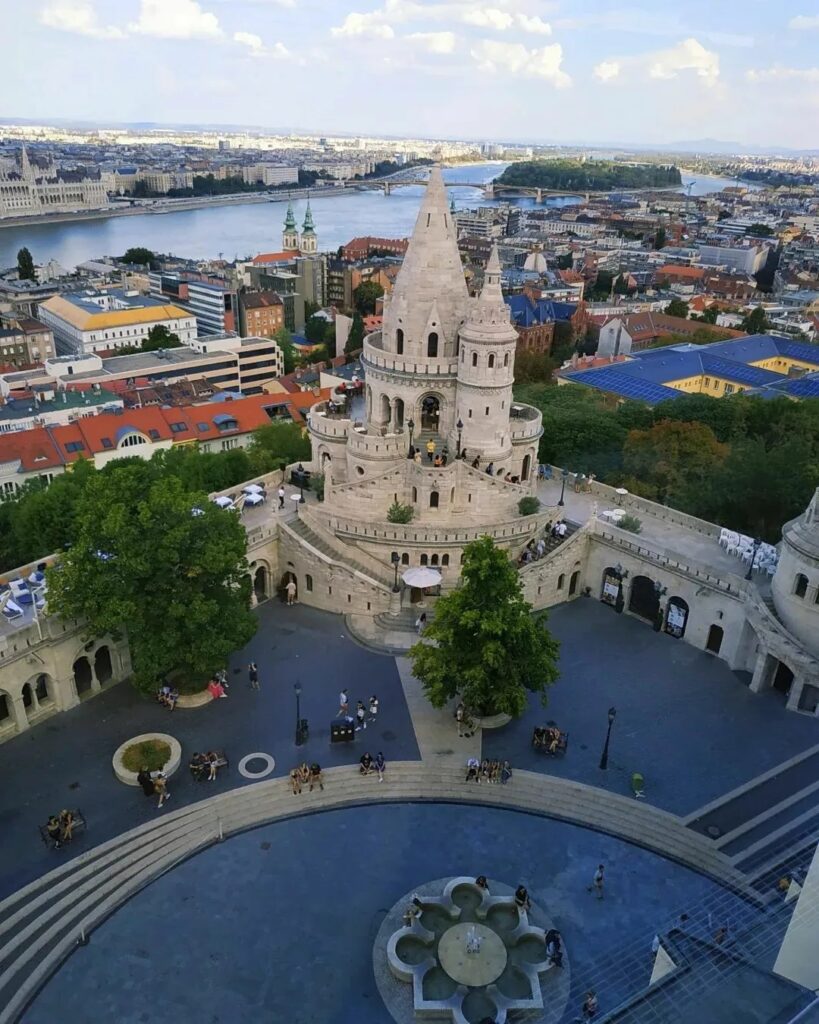
Fisherman’s Bastion
Fisherman’s Bastion is a shining gem on Castle Hill in Budapest, located along the Danube River on the Buda side, adjacent to the famous Matthias Church. This neo-Gothic and neo-Romanesque viewpoint attracts countless visitors with its unique charm.
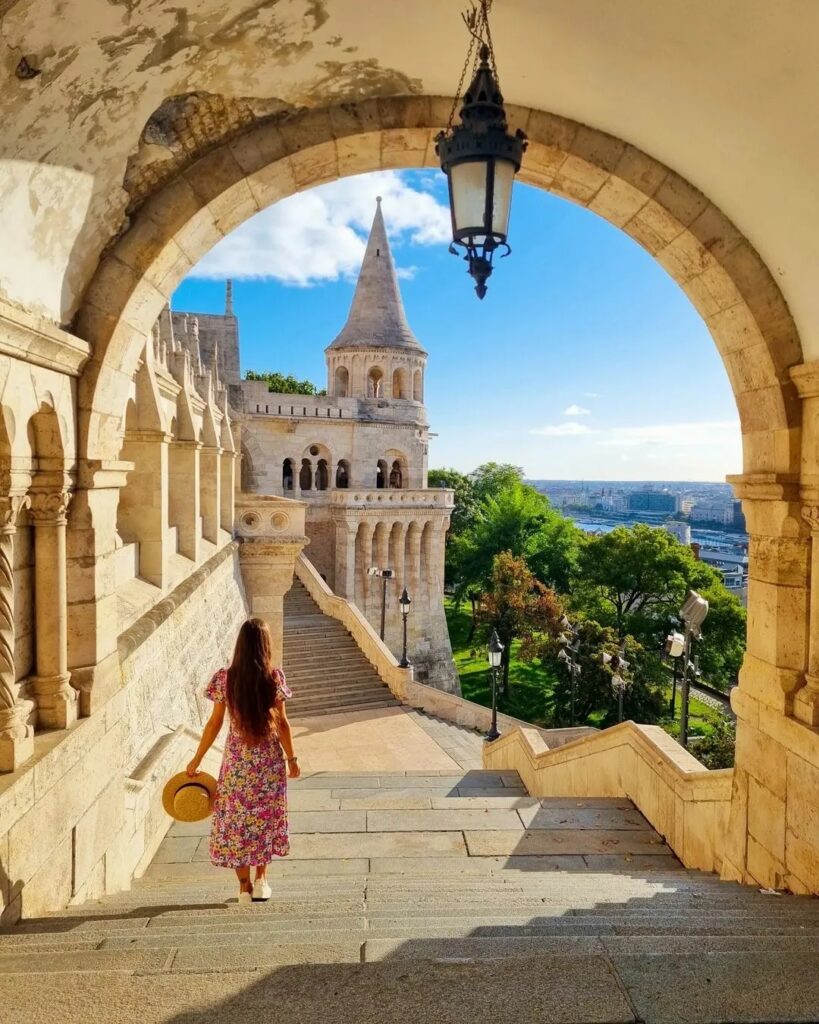
Originally built in 1905, the site was once a fish market, and later, fishermen constructed this bastion for defense, making it one of the most representative structures in Budapest. Constructed from white limestone, its exterior harmonizes with the white spires and round towers in a neo-Roman style, as if from a fairy tale.
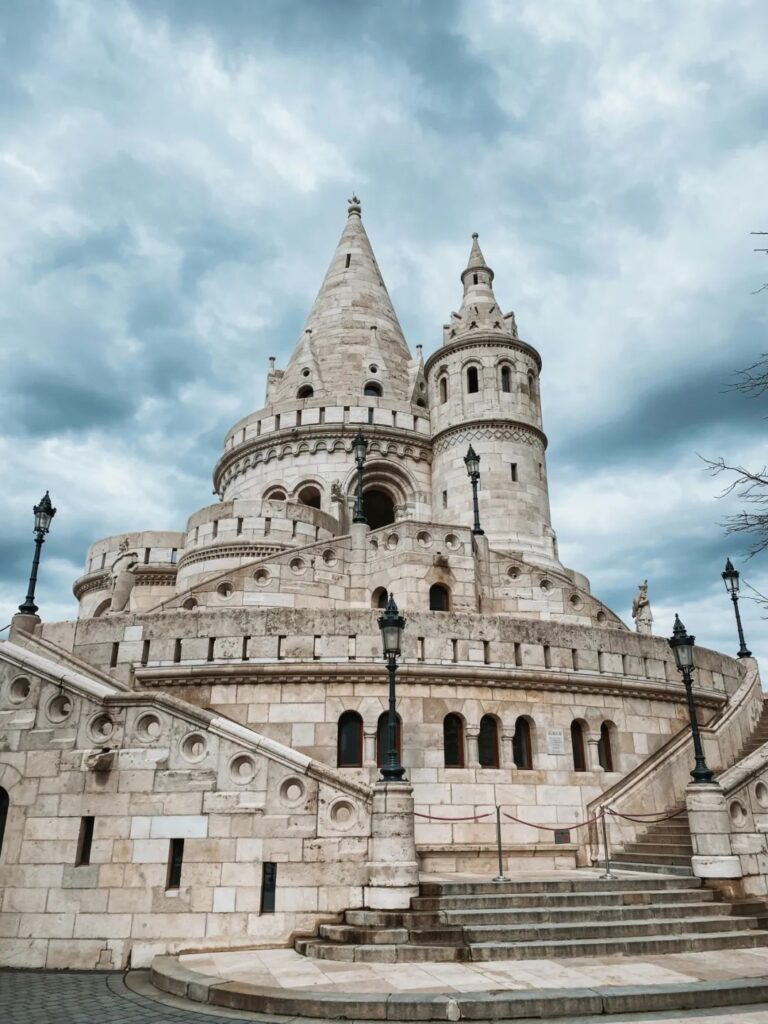
Beyond its splendid views, Fisherman’s Bastion is also a place filled with a romantic atmosphere. Visitors can enjoy coffee, appreciate art, or listen to street musicians perform here.
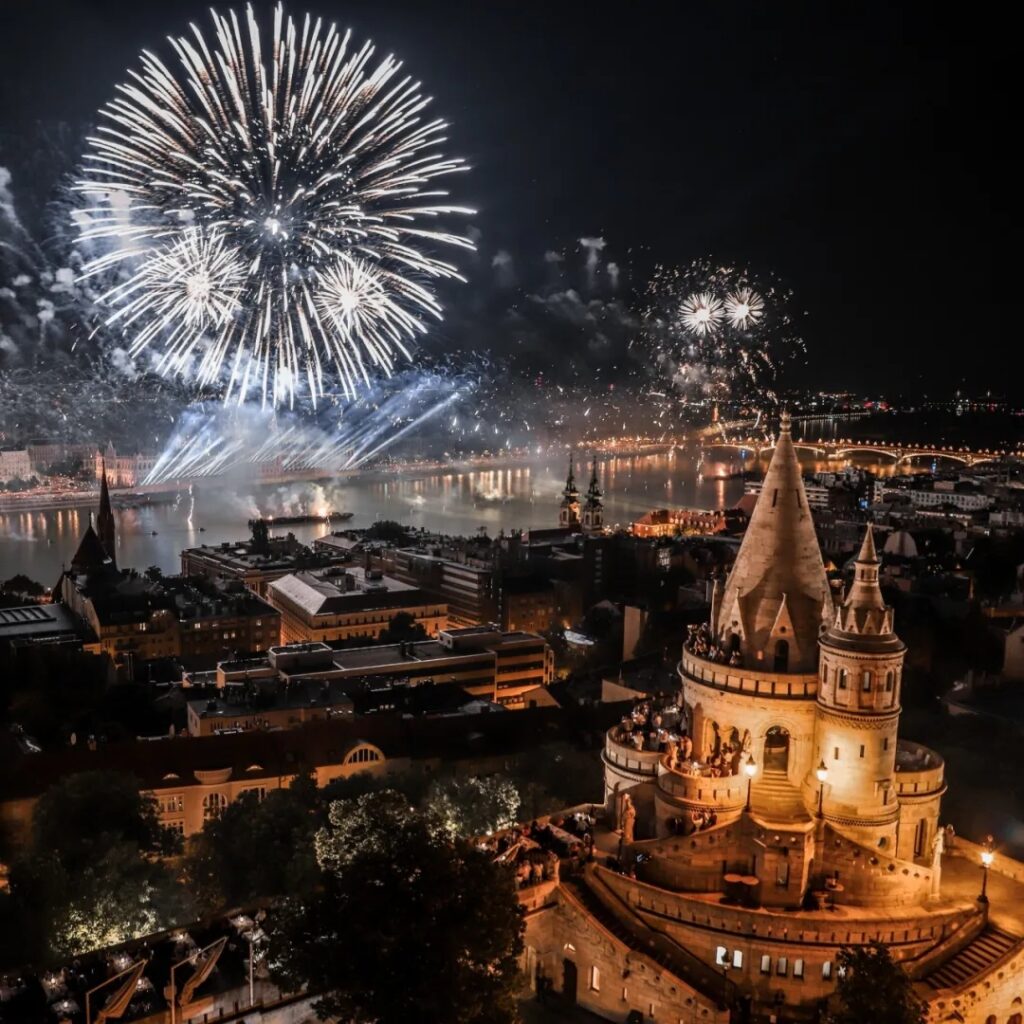
Matthias Church
Matthias Church, situated along the Danube River in Budapest, on the side of Castle Hill near Fisherman’s Bastion, is one of the symbols of Budapest.
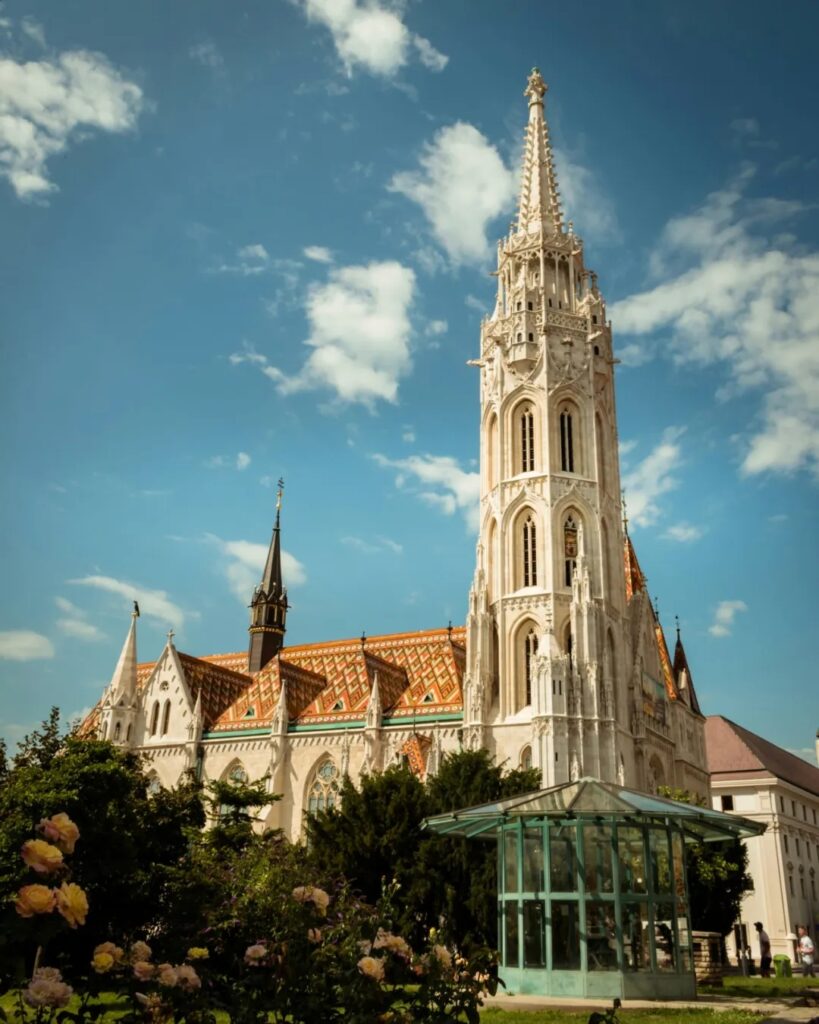
The church was initially built between 1255 and 1269 by King Béla IV in Gothic style, later undergoing numerous renovations and blending various styles including Hungarian folk art, Art Nouveau, and Turkish design.
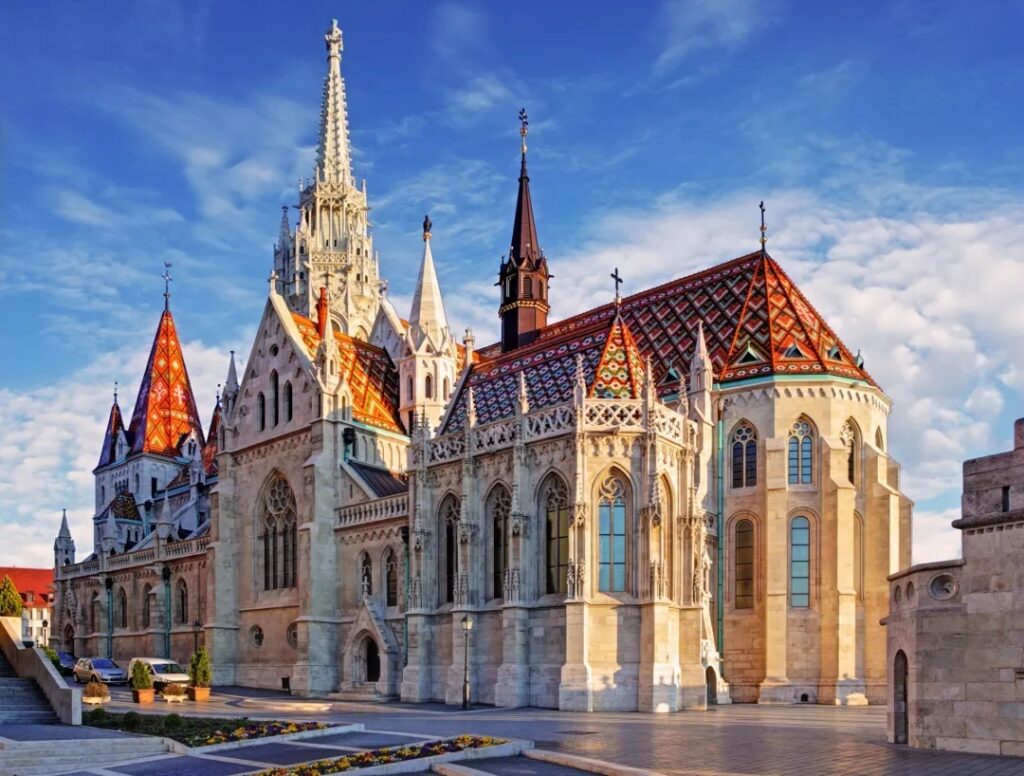
The interior features beautiful stained glass and frescoes, with Victor Hugo once describing Matthias Church as a “symphony in stone.” It’s also known as the “Coronation Church” where Hungarian kings were crowned. Concerts or religious services are occasionally held within.
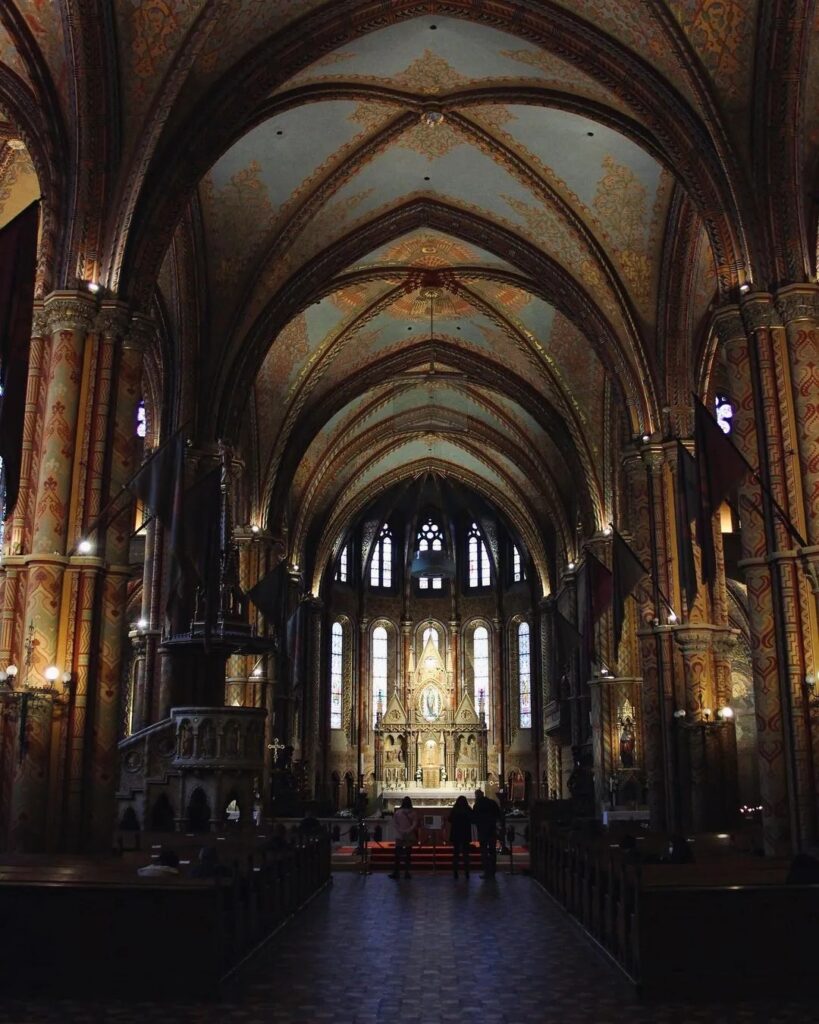
Hungarian Parliament Building
The Hungarian Parliament Building is a famous architectural landmark in Hungary and symbolizes the country’s political center and national power.
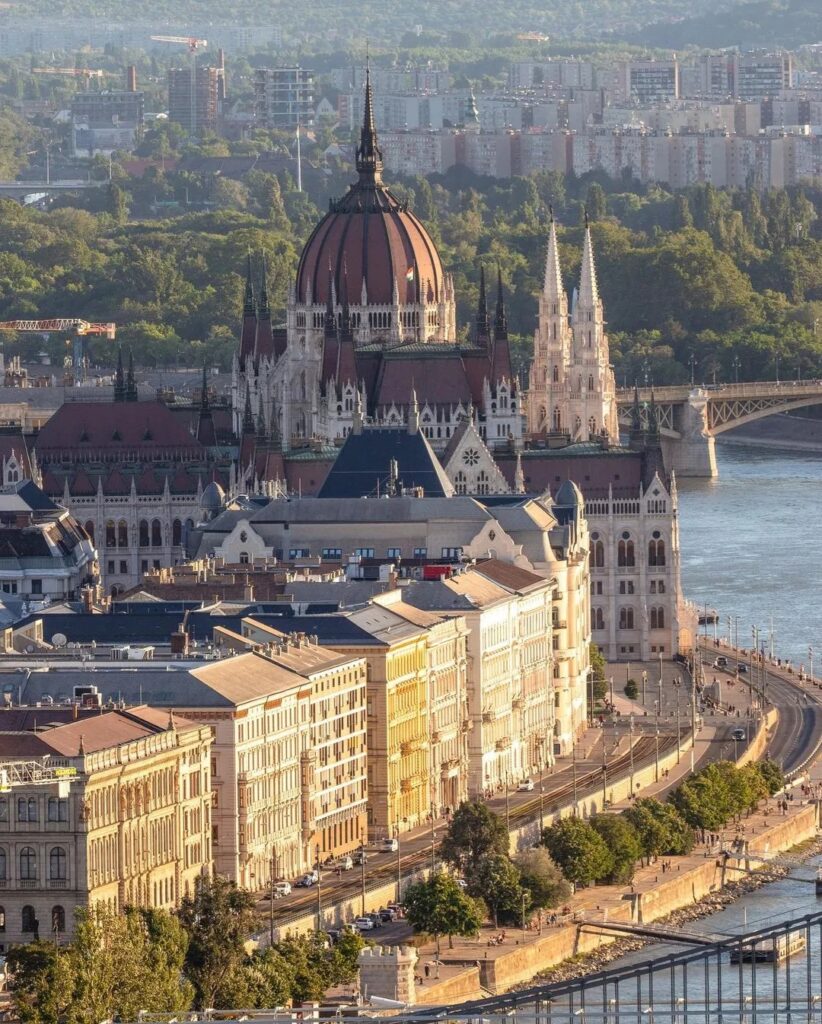
Located along the Danube River in Budapest, it’s a building that symbolizes the power of the common people, i.e., the parliament.
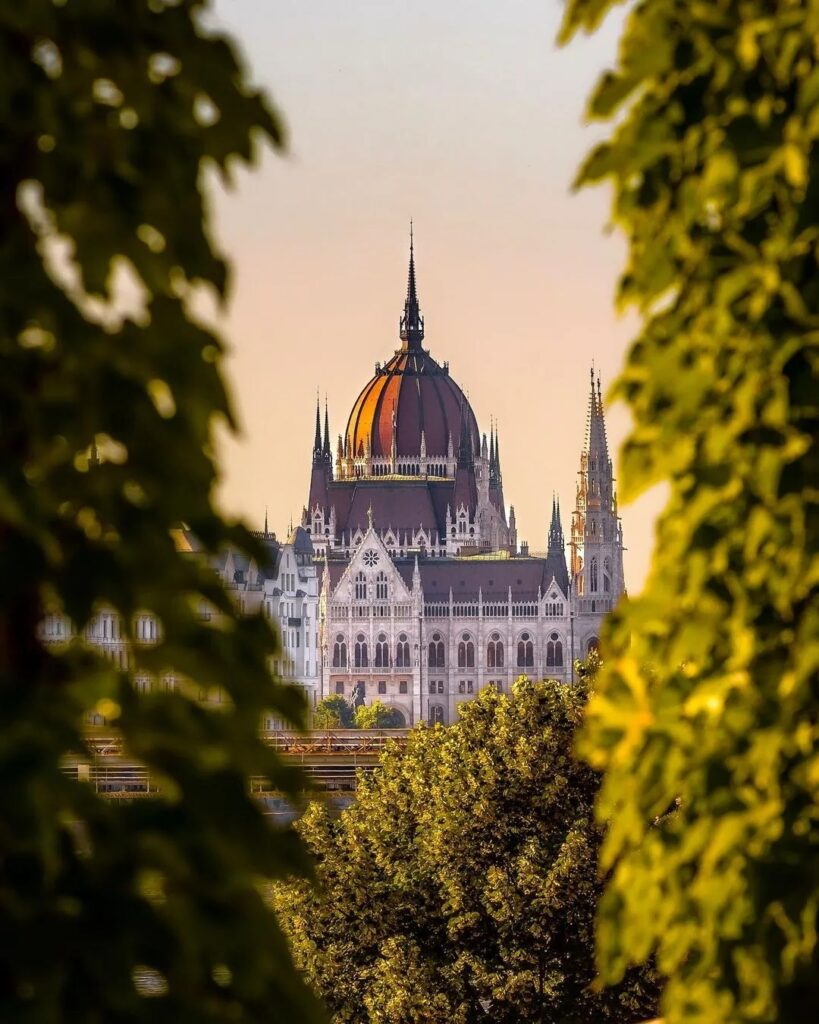
The front façade facing the river is the most impressive, with its neo-Gothic architectural style exuding grandeur.
From a distance, the silhouette of the Parliament Building is clear and solemn, harmonizing with the surrounding ancient buildings and modern landscapes to form a unique picture. When night falls, the building’s lights dazzle, becoming a stunning sight in the city.
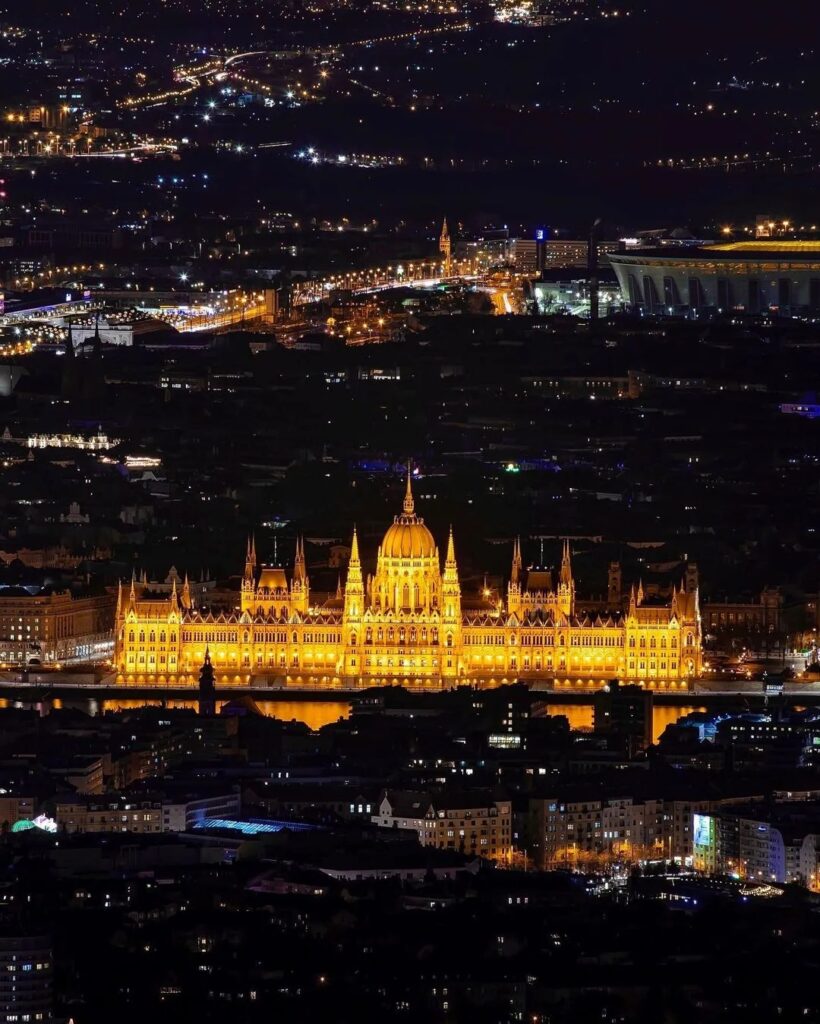
Chain Bridge
The Chain Bridge in Hungary is a majestic and historically significant bridge that spans the Danube River in Budapest, connecting Buda and Pest.
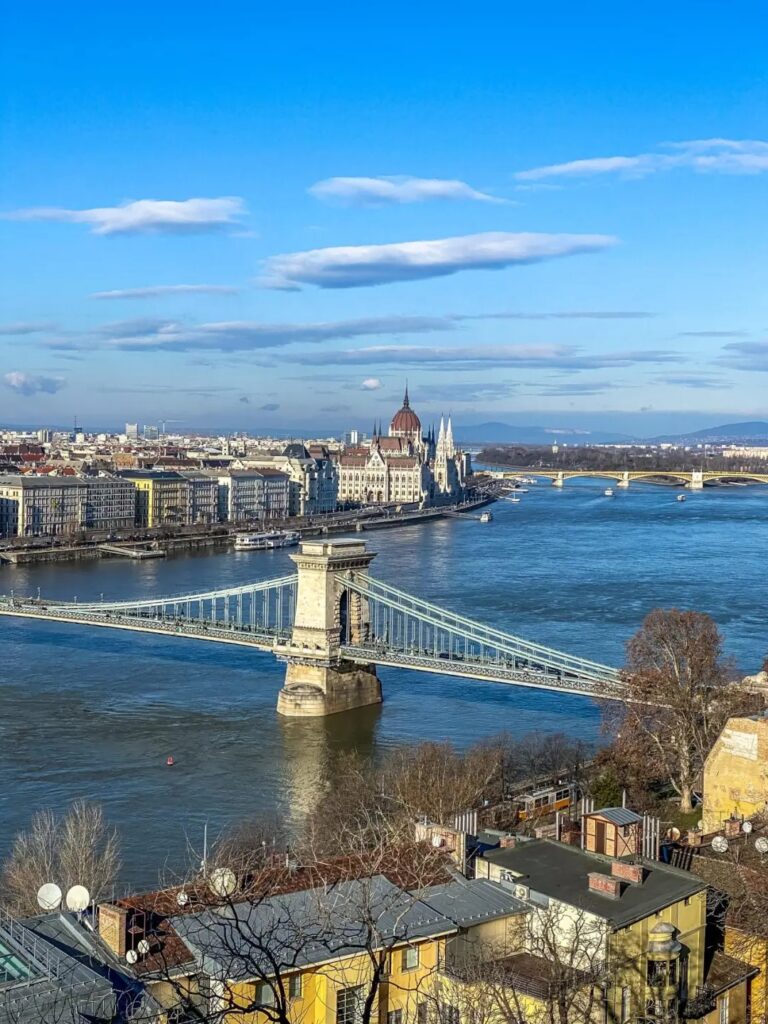
Construction began in 1839; it’s a three-span iron bridge supported by chains, 380 meters long, 15.7 meters wide, with a span of 203 meters between the two piers, which was the largest in the world at the time. The bridge’s supports are two grand stone triumphal arches, with a pair of enormous stone lions standing guard on each side, symbolizing the indomitable spirit of the Hungarian people.
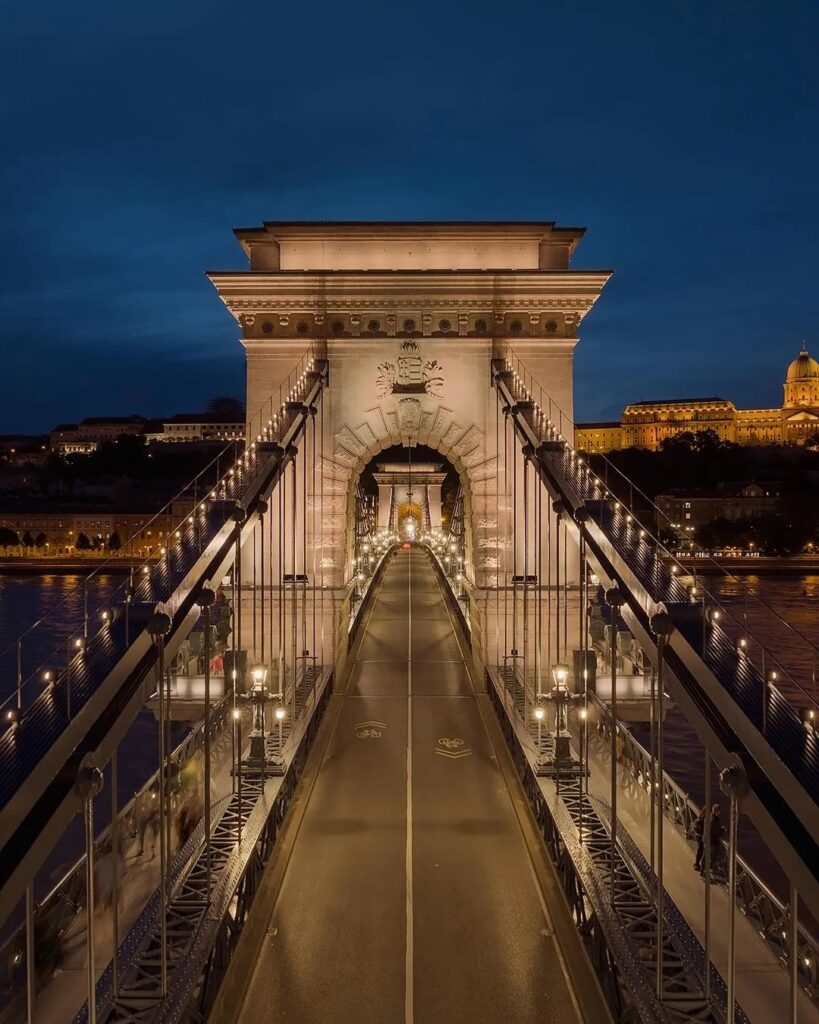
The Chain Bridge is not just a functional bridge but also a work of art. On the bridge, one can enjoy the beautiful views along both banks of the Danube and the unique urban landscape of Budapest.
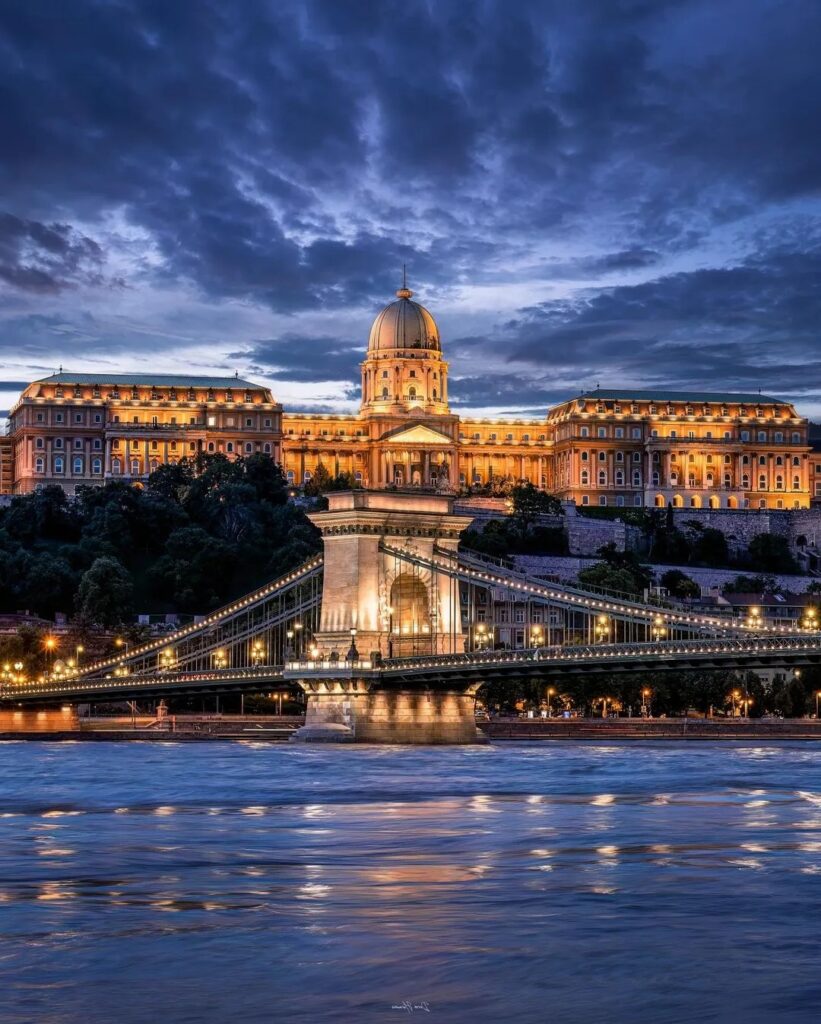
St. Stephen’s Basilica
St. Stephen’s Basilica, also known as St. Stephen’s Cathedral, is a magnificent Roman Catholic basilica in Budapest. This grand building is not only one of the tallest in Budapest but also an important landmark and cultural symbol of the city.
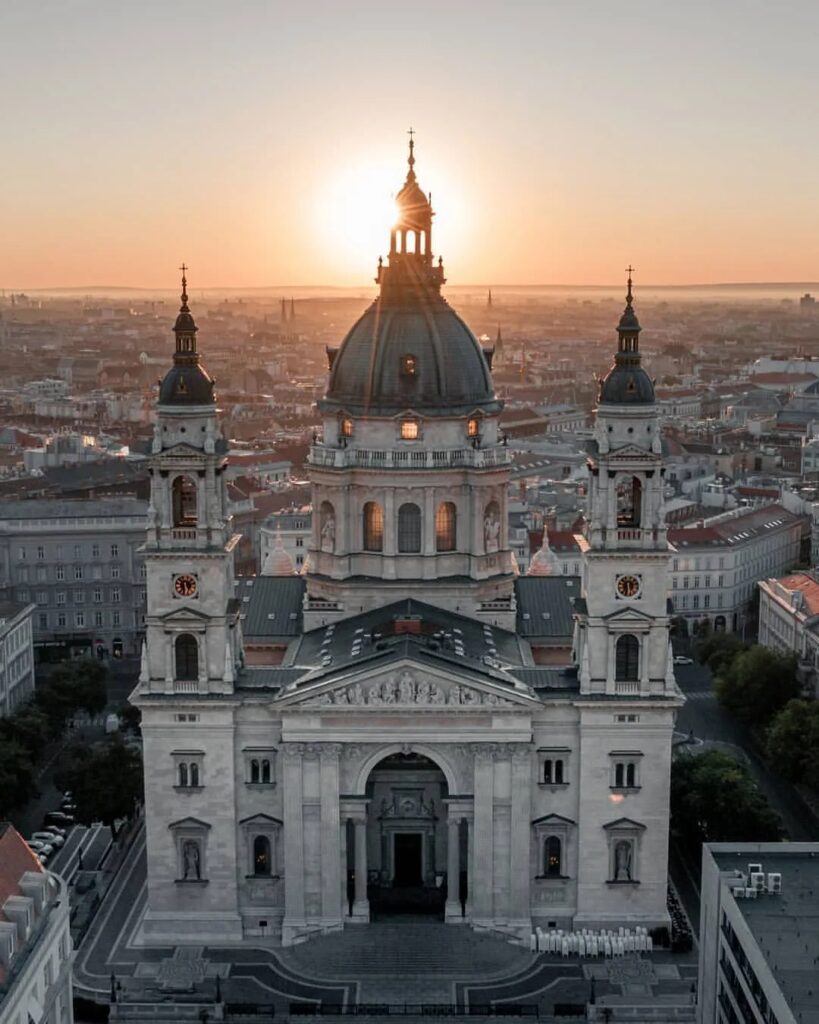
Built in the neoclassical style, the basilica has a Greek cross plan. Inside, it’s adorned with gold, solemn and majestic, with frescoes, sculptures, and colorful stained glass windows exuding artistic flair. The facade features two large bell towers, with the southern tower housing Hungary’s largest bell, weighing over 9 tons.
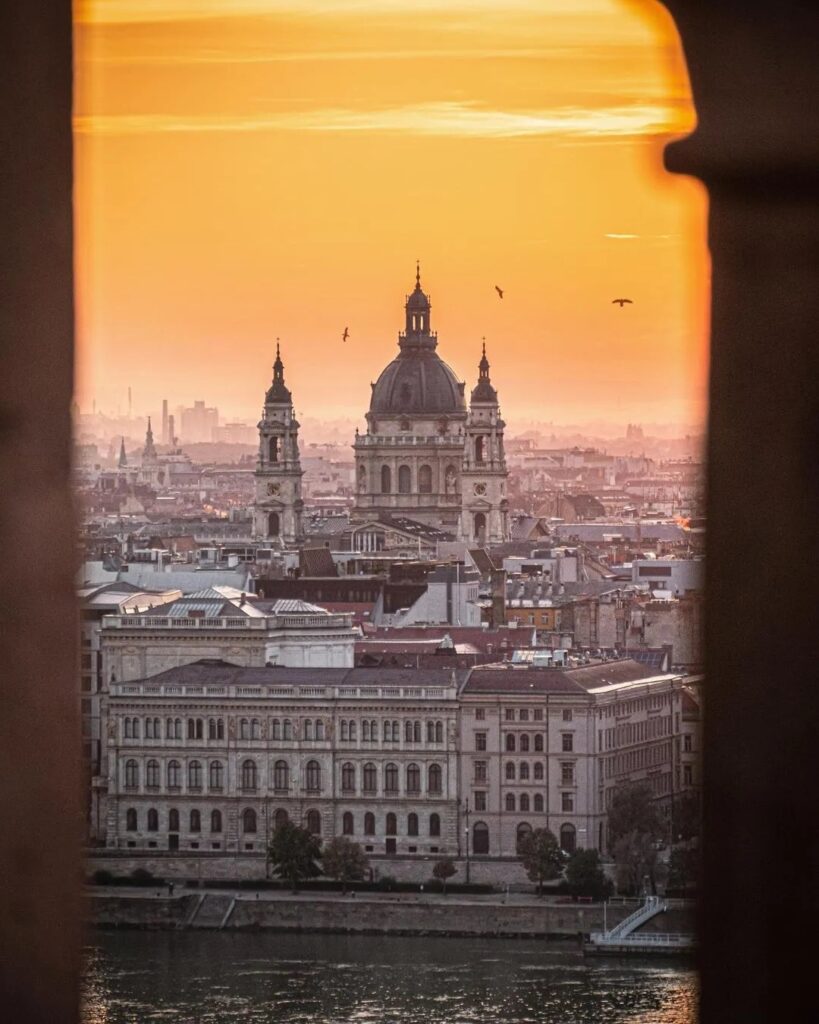
Here, one can view the mummified right hand of King Stephen I, which is one of the basilica’s significant historical relics. St. Stephen’s Basilica is not just a religious building but also a treasure trove of art, history, and culture.
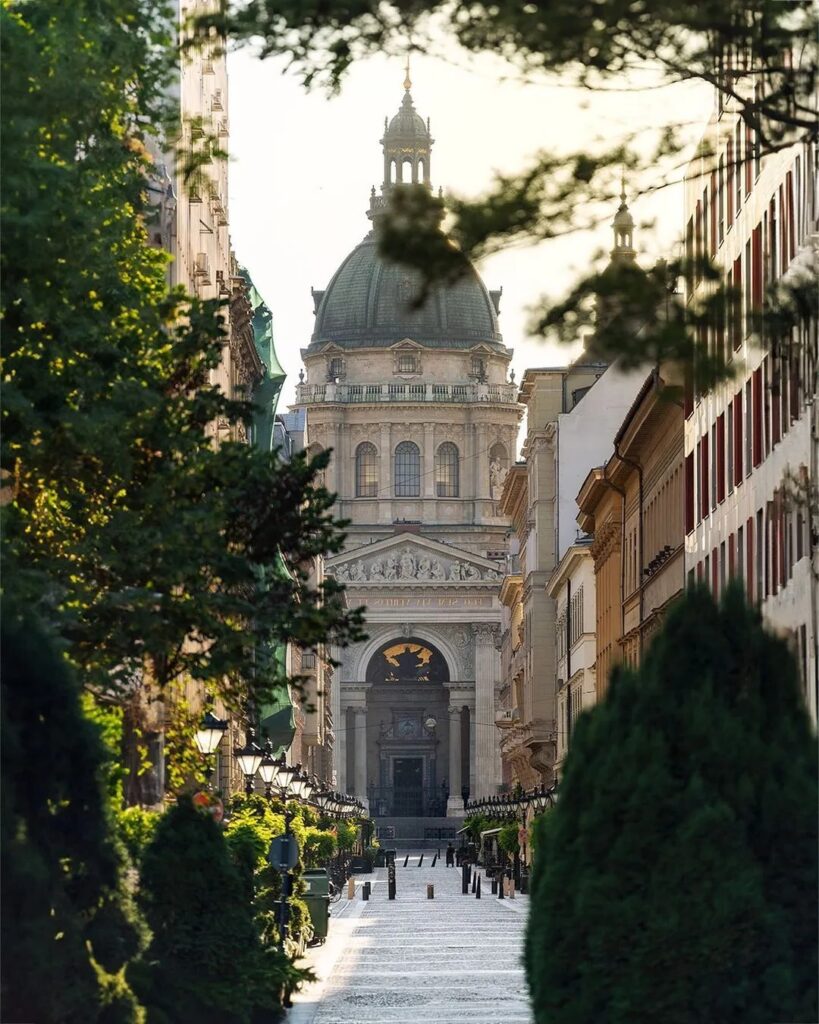
Széchenyi Thermal Bath
Széchenyi Thermal Bath, located in Budapest’s City Park, is not only Europe’s largest medicinal thermal bath but also a haven for natural healing and relaxation.
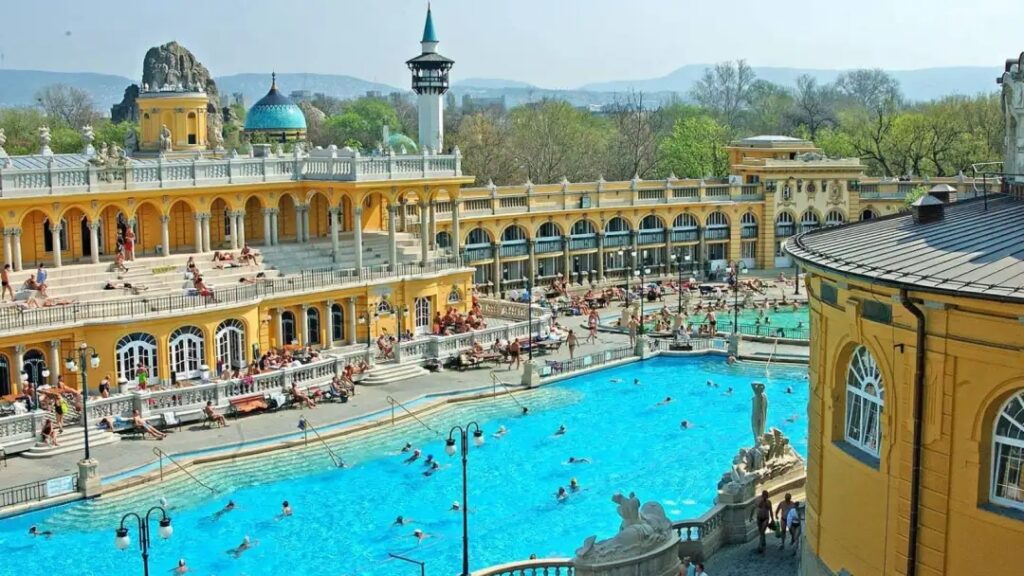
The history of this bath dates back to 1913, with its architecture in the neo-Baroque style, elegant and solemn. It’s named after István Széchenyi, a prominent figure in Hungarian history.
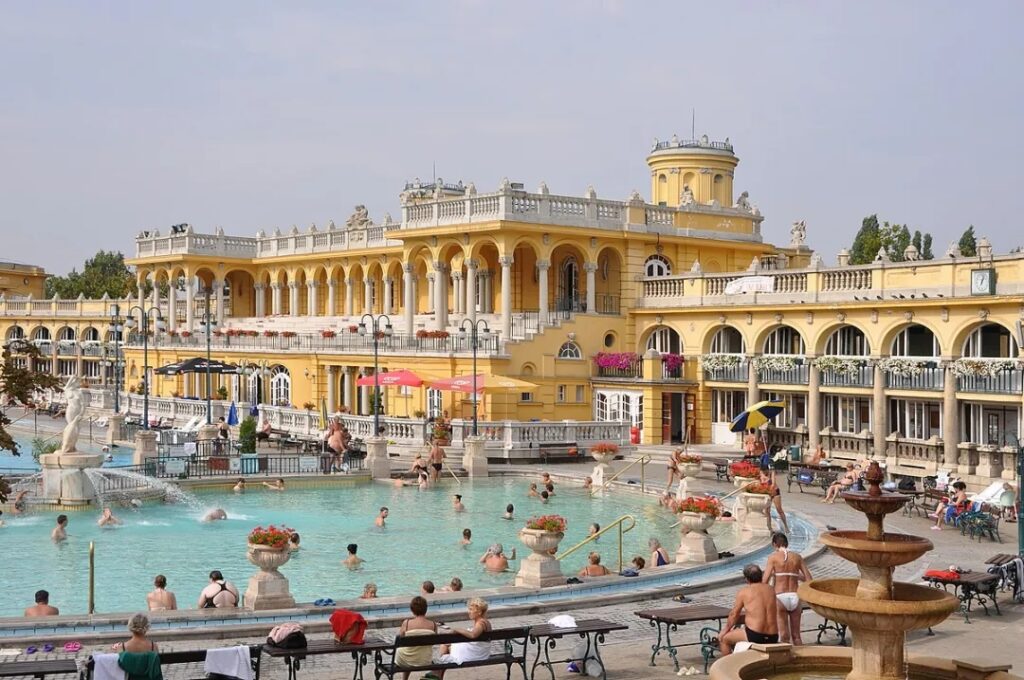
The thermal waters here are rich in sulfate, bicarbonate, potassium, magnesium, and other minerals, offering a comforting experience when you soak in the baths.
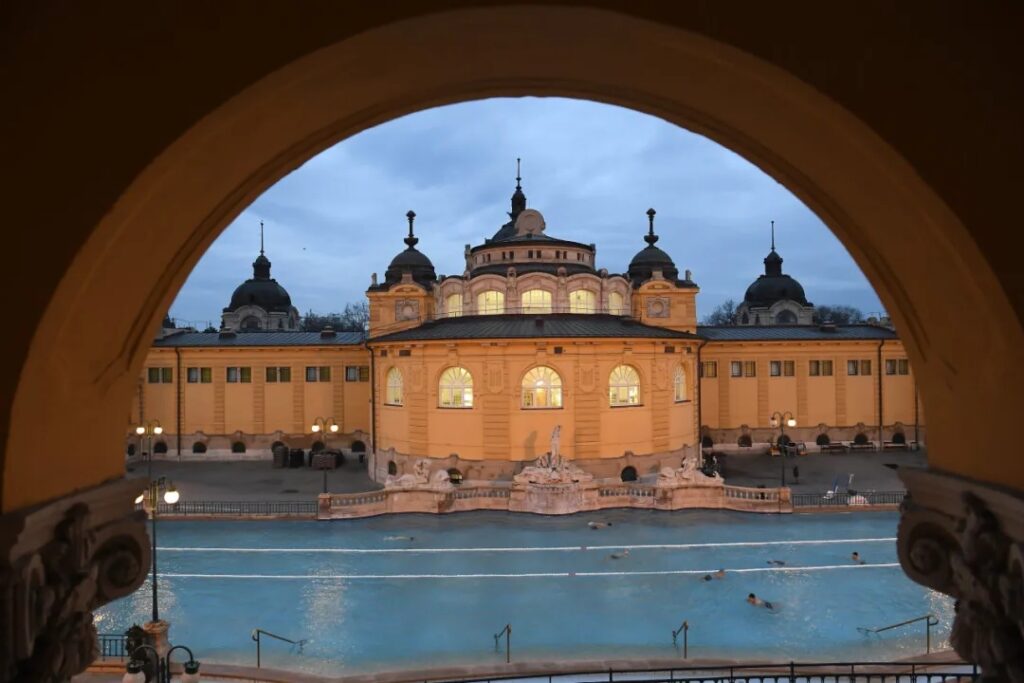
Andrássy Avenue
While Paris has the Champs-Élysées, Budapest has Andrássy Avenue. This avenue, constructed in 1872, is named after Count Gyula Andrássy, a distinguished Hungarian Prime Minister. It connects Elizabeth Square to City Park, showcasing the blend of Budapest’s historical splendor and modernity.
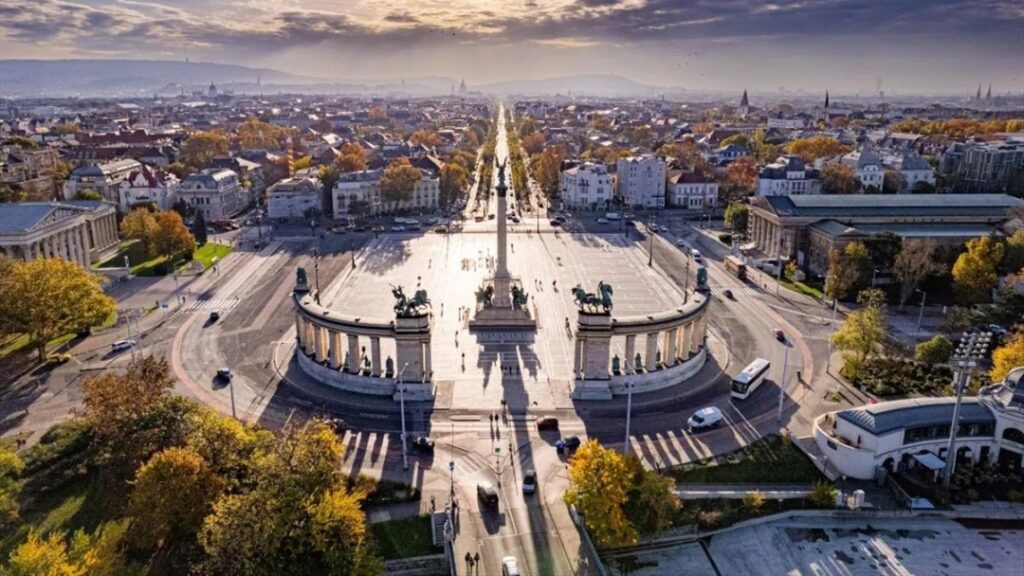
The buildings along the avenue are predominantly in Renaissance-style palaces and houses, attracting the gaze of countless visitors. Strolling down Andrássy Avenue, the greenery on both sides provides a cool and tranquil setting for pedestrians.
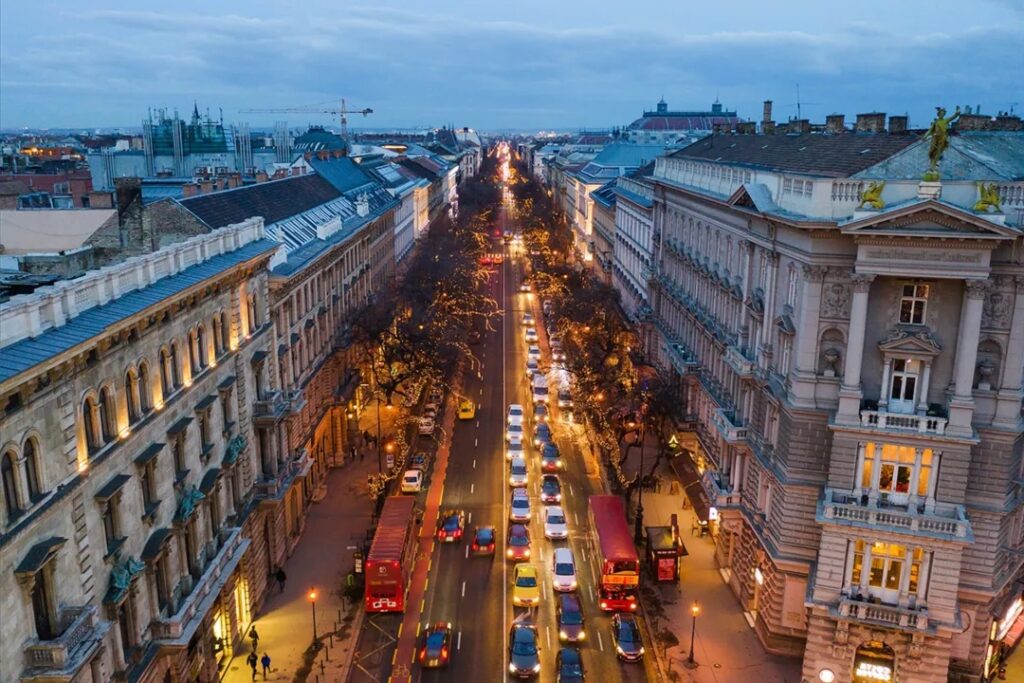
Danube River Cruise
The Danube, the second-longest river in Europe, flows through ten countries. Embarking on a cruise along the Danube, the scenery on both banks is picturesque, with ancient castles, grand bridges, and modern buildings reflecting in the sunset, creating a harmonious and majestic scene.
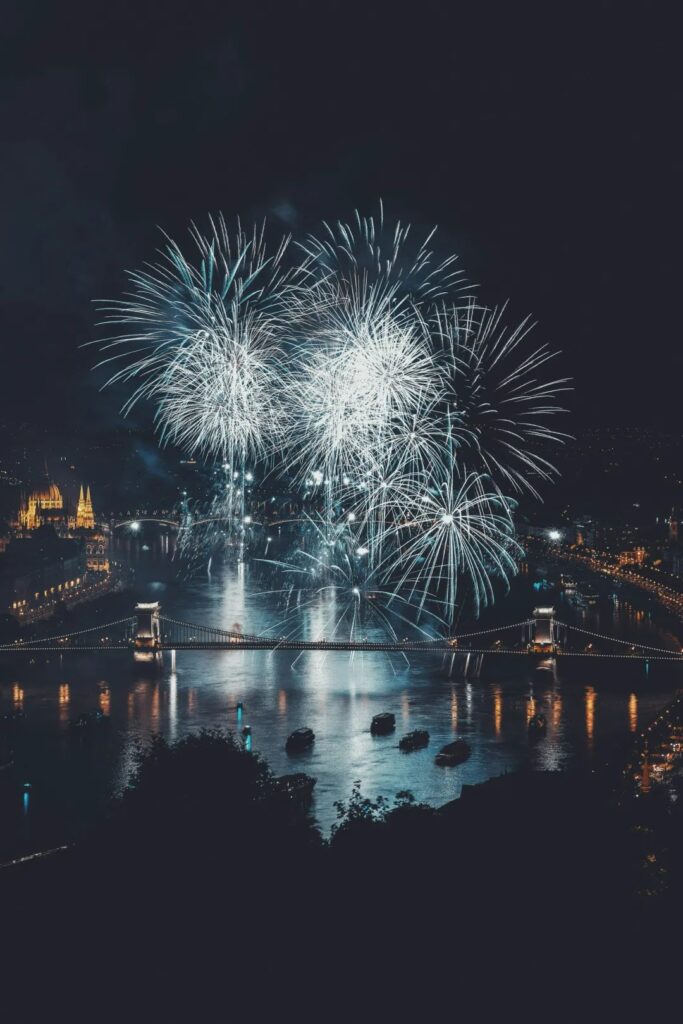
As night falls, the lights from the cruise ship mingle with the shore lights, enchanting passengers with a dreamlike view, as if they were in a fairy-tale world.
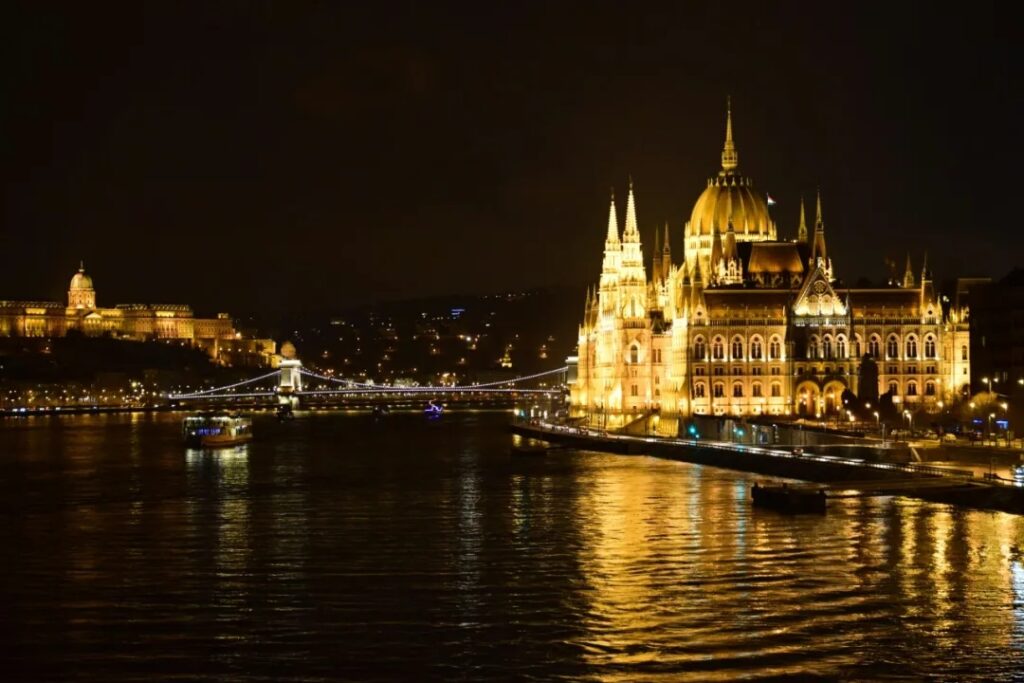
Signature Cuisine
Hungary has many classic dishes not to be missed. These dishes are not only unique in flavor but also steeped in Hungary’s deep cultural traditions and historical background, allowing one to feel the charm of this country while savoring the food.
Goulash
This is Hungary’s national dish, a hearty soup made with beef, onions, peppers, and potatoes, offering a rich and memorable taste.

Salami
A Hungarian specialty sausage, primarily made from sheep intestines, with a filling of sheep offal, seasoned with spices and paprika, providing a distinctive flavor.

Lángos
A Hungarian street food, a flatbread fried and usually topped with garlic, cheese, and other ingredients, tasting somewhat like fried pizza.

Chimney Cake
A Hungarian origin dessert, also popular in neighboring countries like the Czech Republic and Poland. The freshly baked pastry is often rolled in various toppings while still hot.
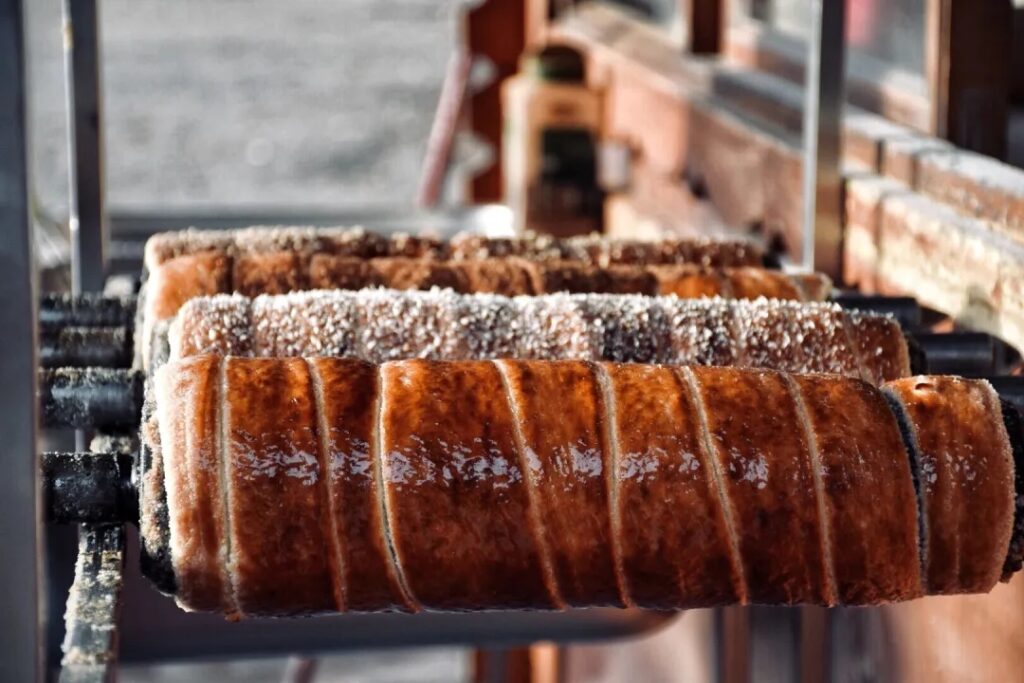
Visa:
Hungary is a Schengen country, so entry requires a Schengen visa and a passport valid for more than six months.
Language:
The official language is Hungarian, but English is also widely spoken.
Currency:
The official currency is the Hungarian Forint, abbreviated as Ft. Visa or Mastercard credit cards can be used for payments.
Best Time to Travel:
June to August.
Spring (March to May): Off-season, with temperatures gradually rising, making flights and hotels relatively cheaper.
Summer (June to August): Peak season, with average temperatures around 20-30°C, perfect for enjoying local wines.
Autumn (September to November): Autumn in Hungary is colorful, with temperatures cooling down but the scenery still pleasant.
Winter (December to February): Winter temperatures are low, with daytime averages around 4°C, not ideal for sightseeing.






